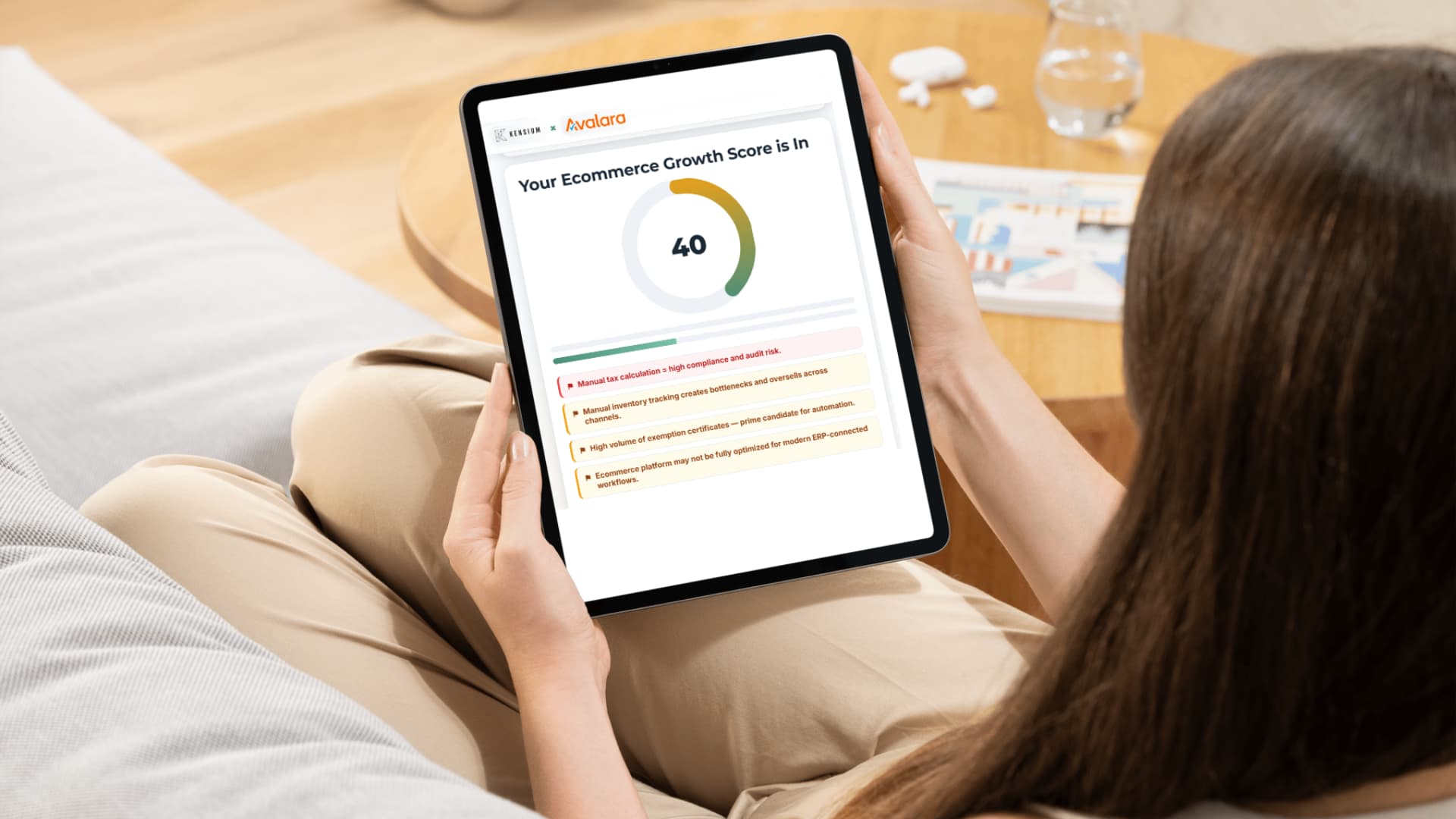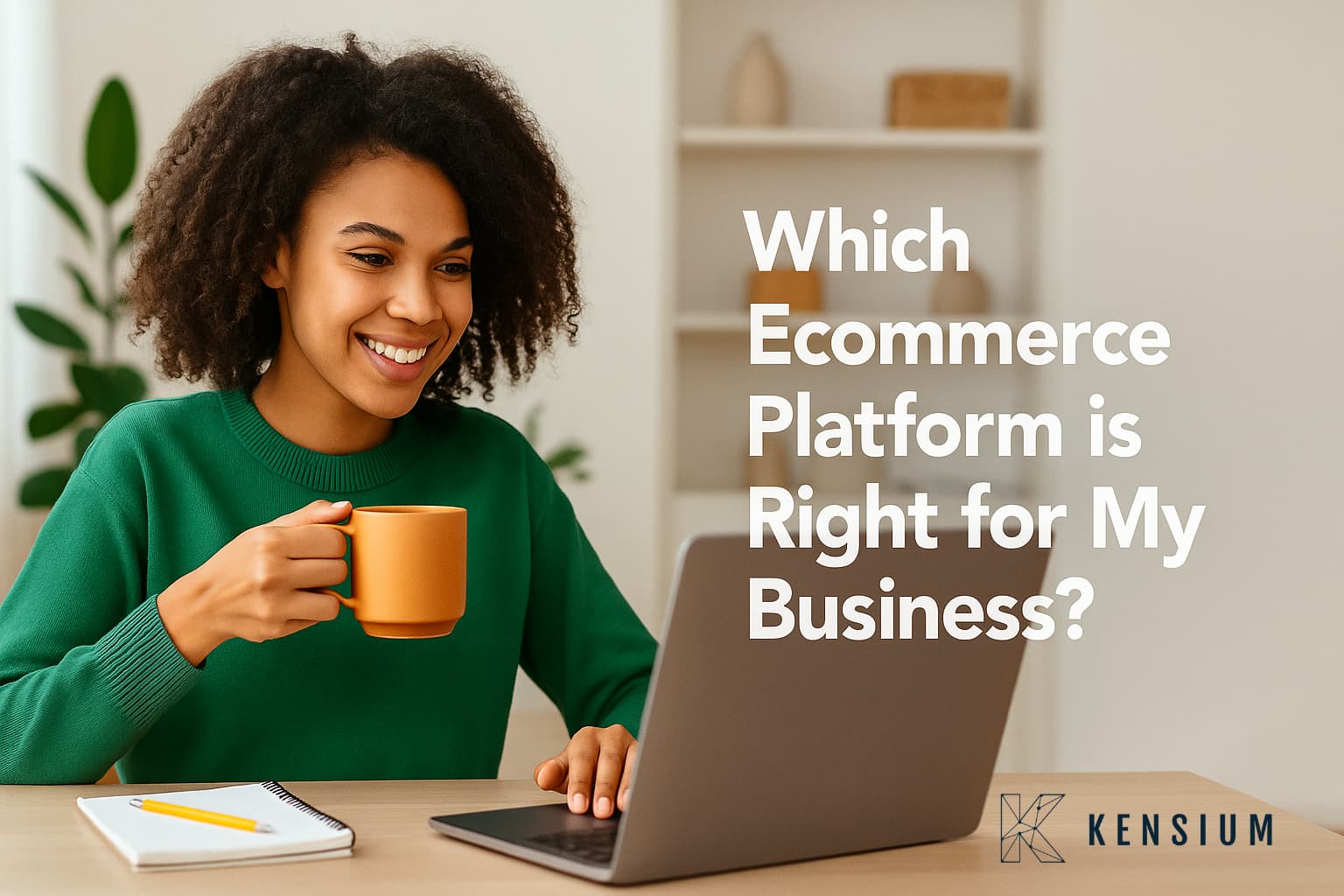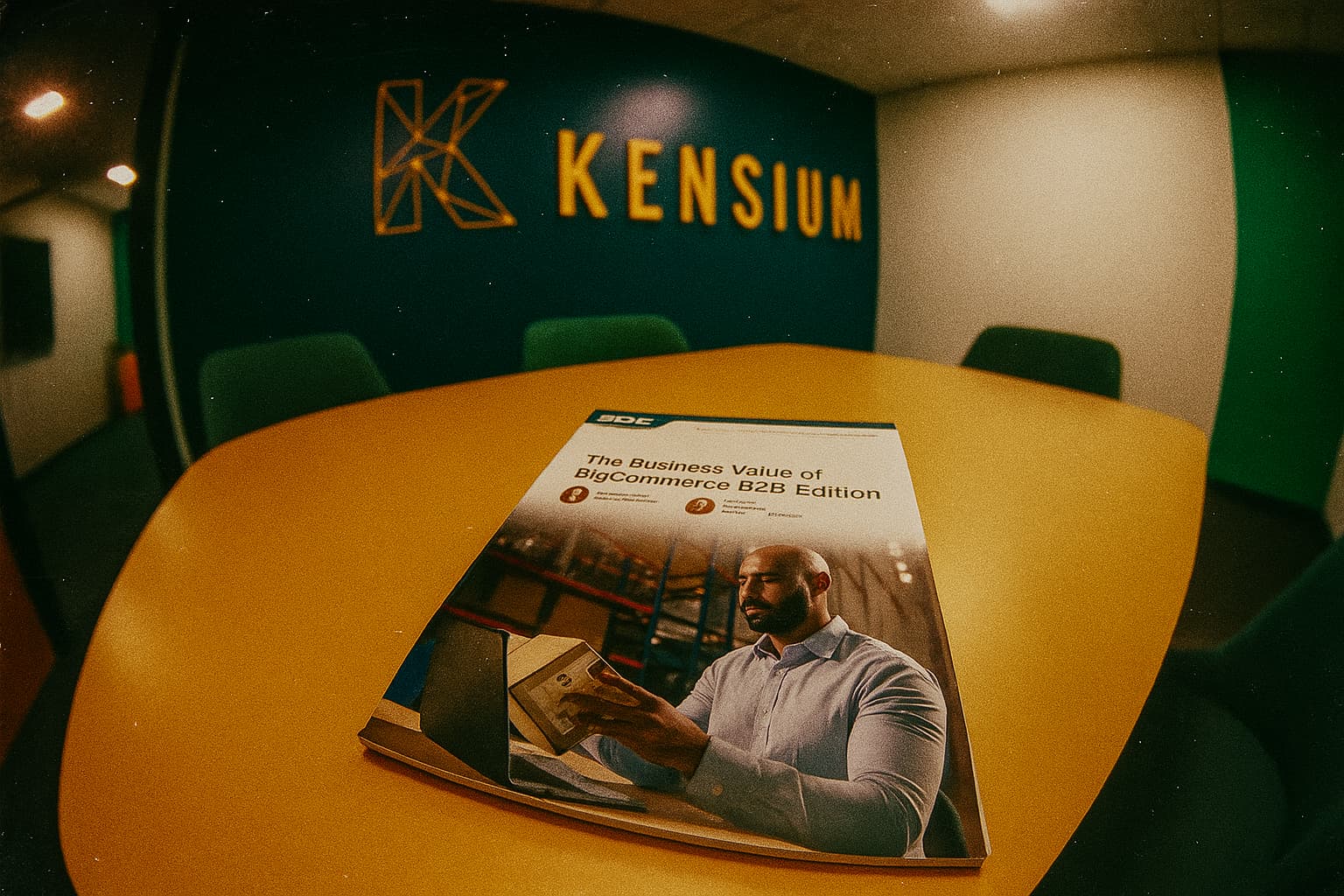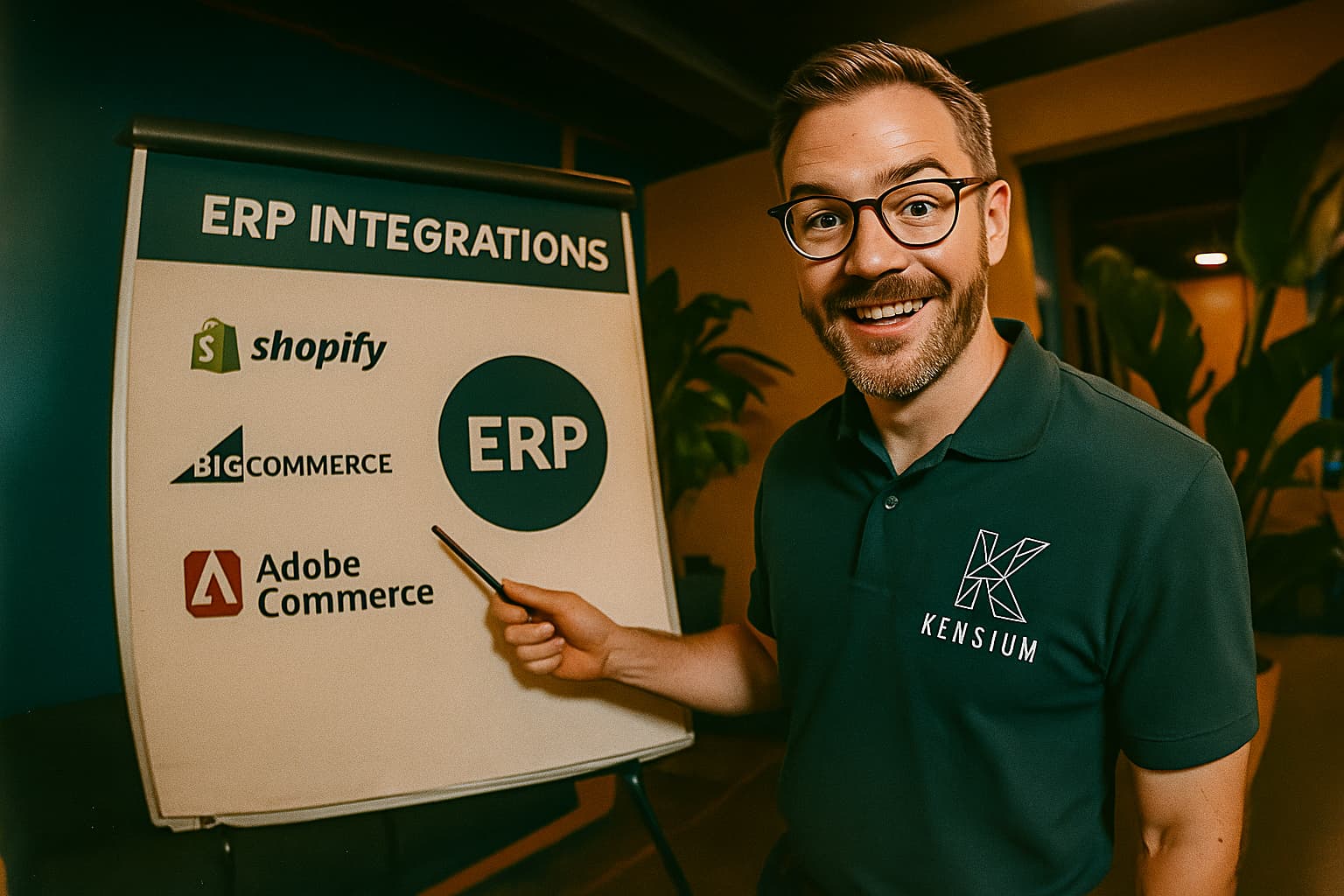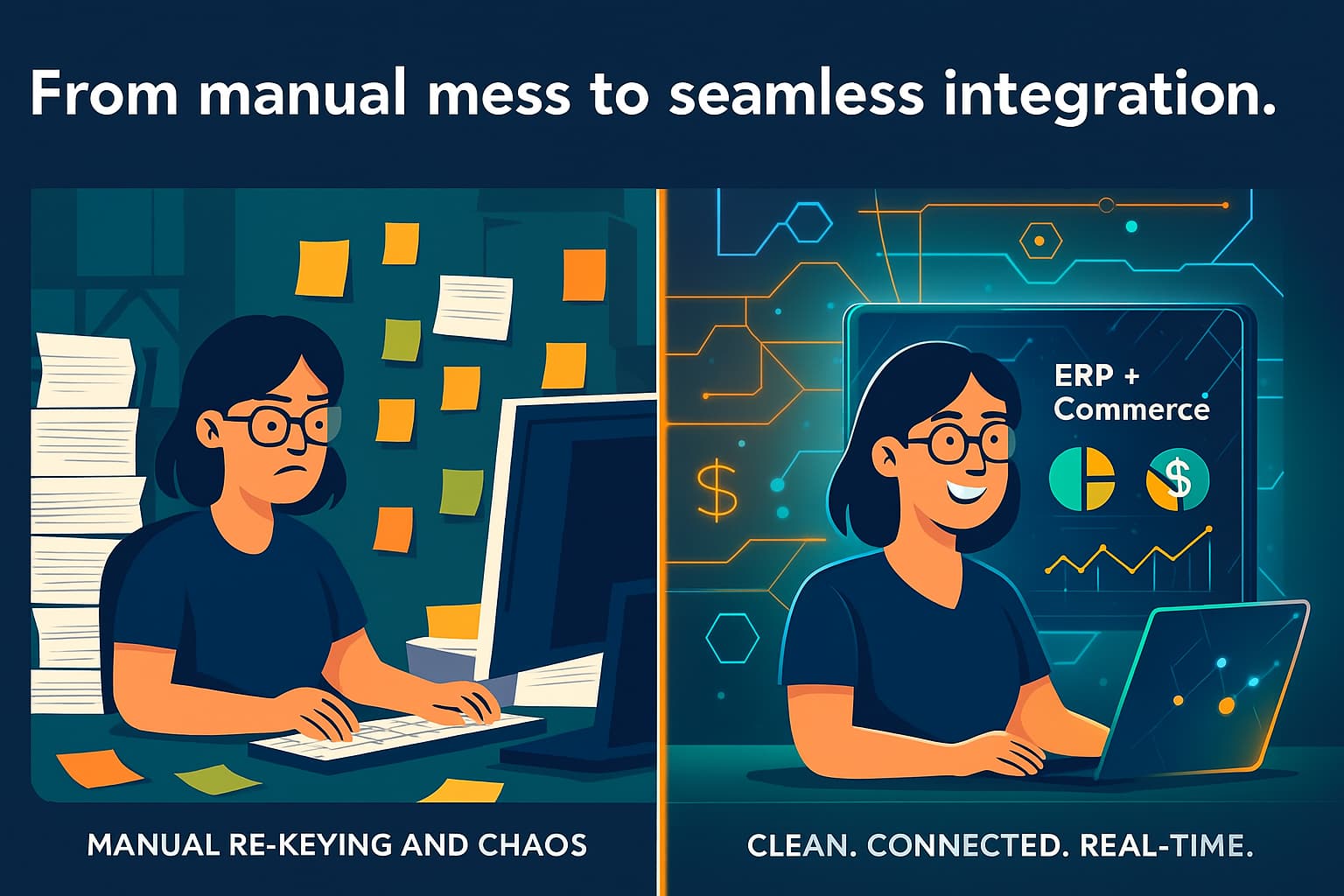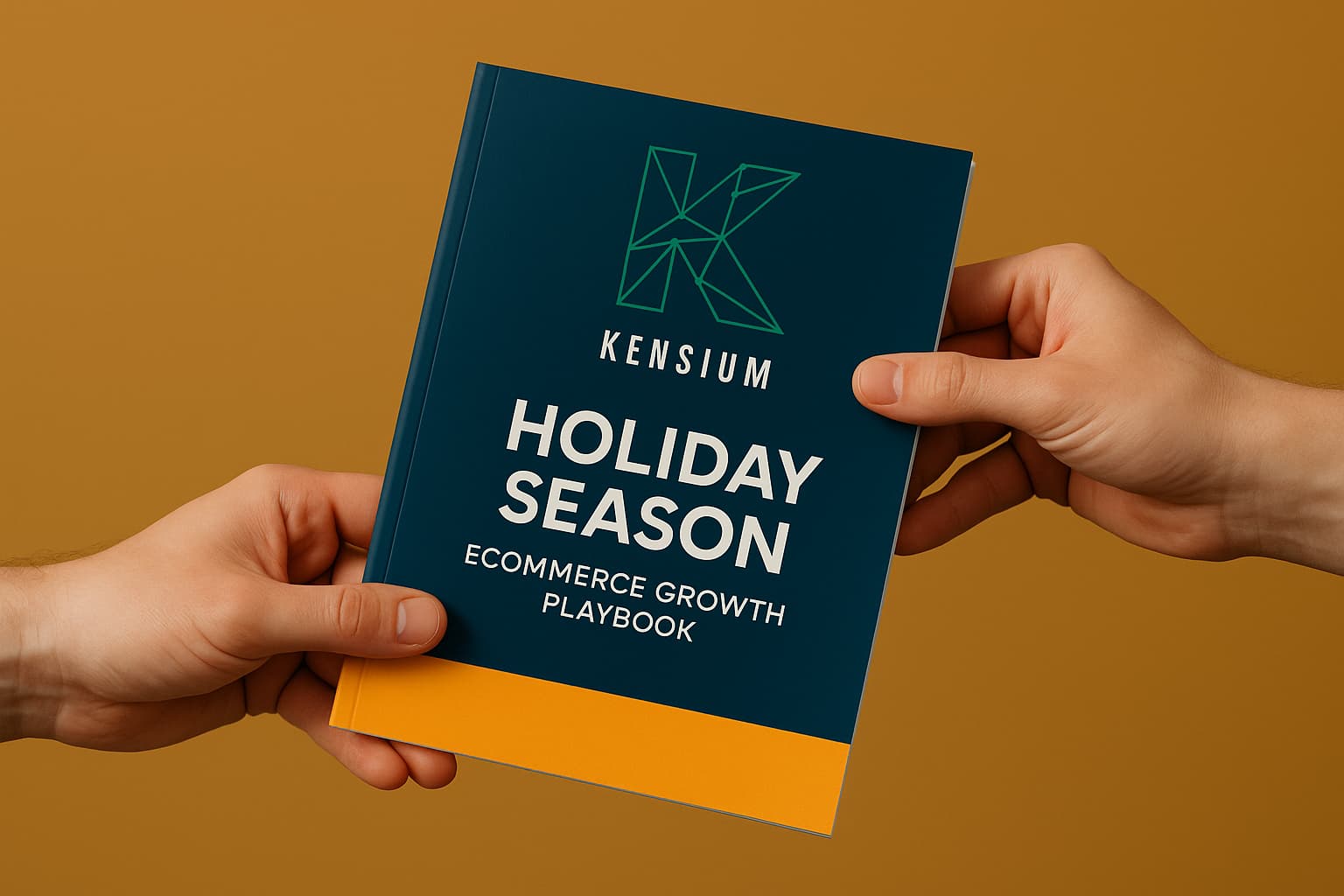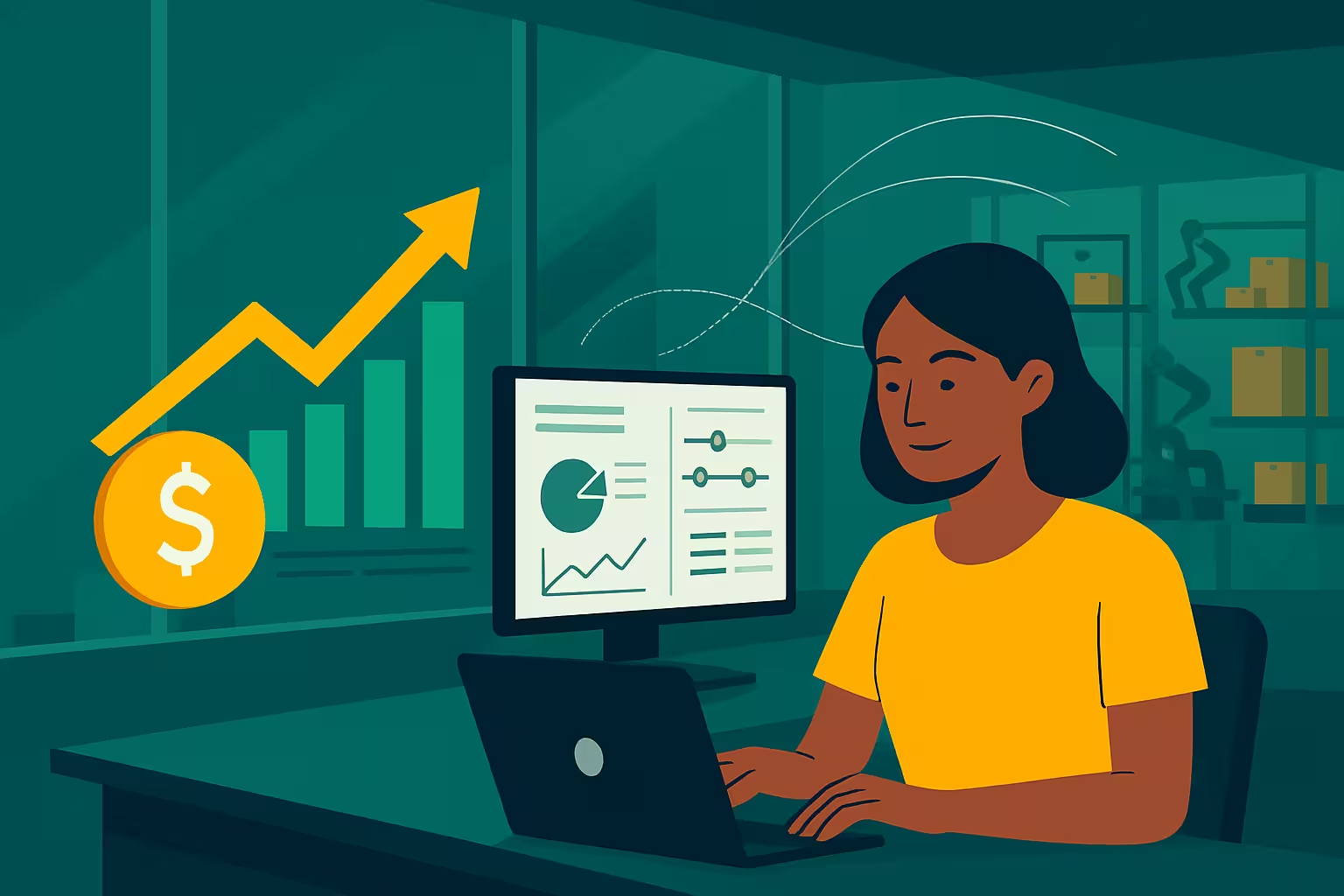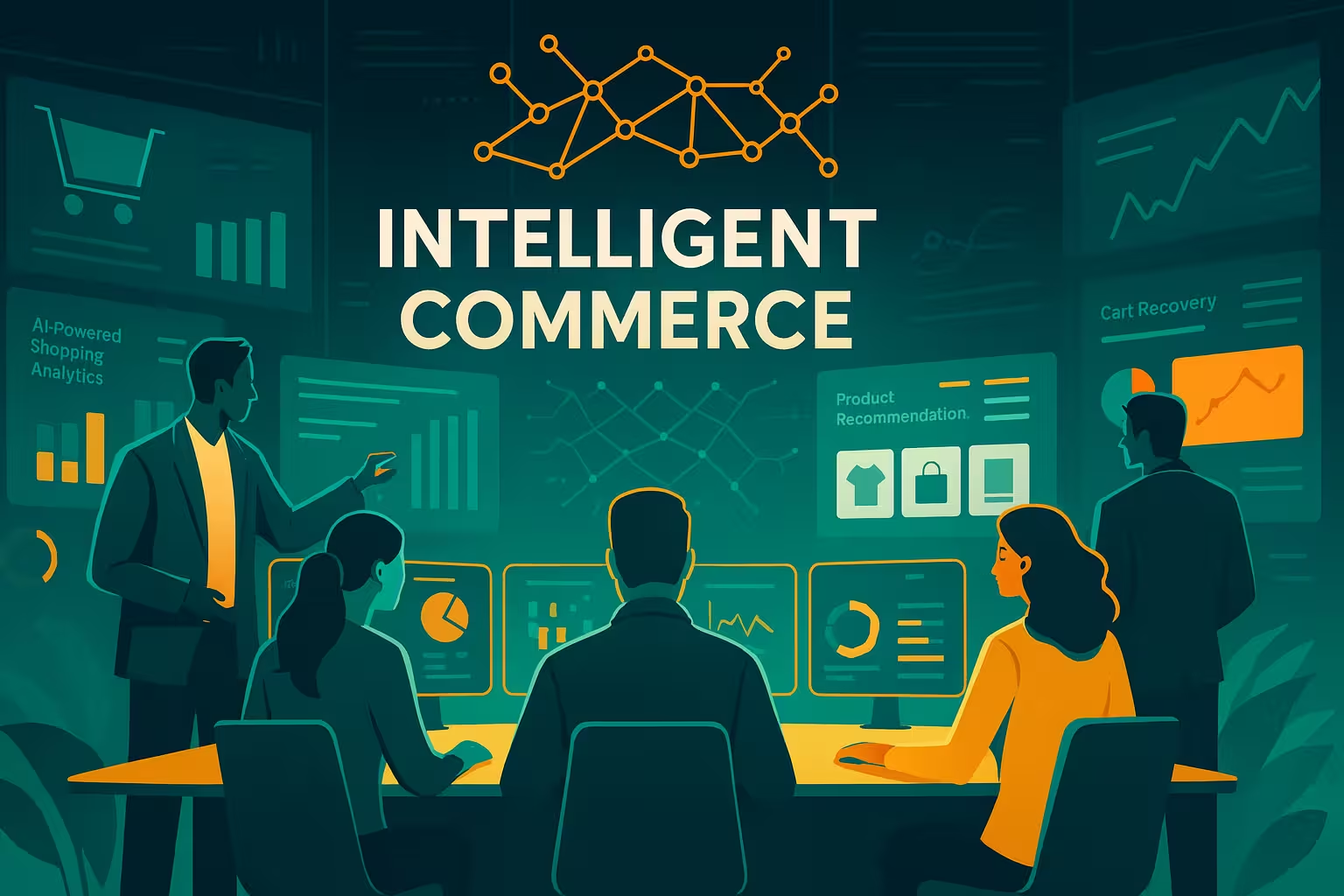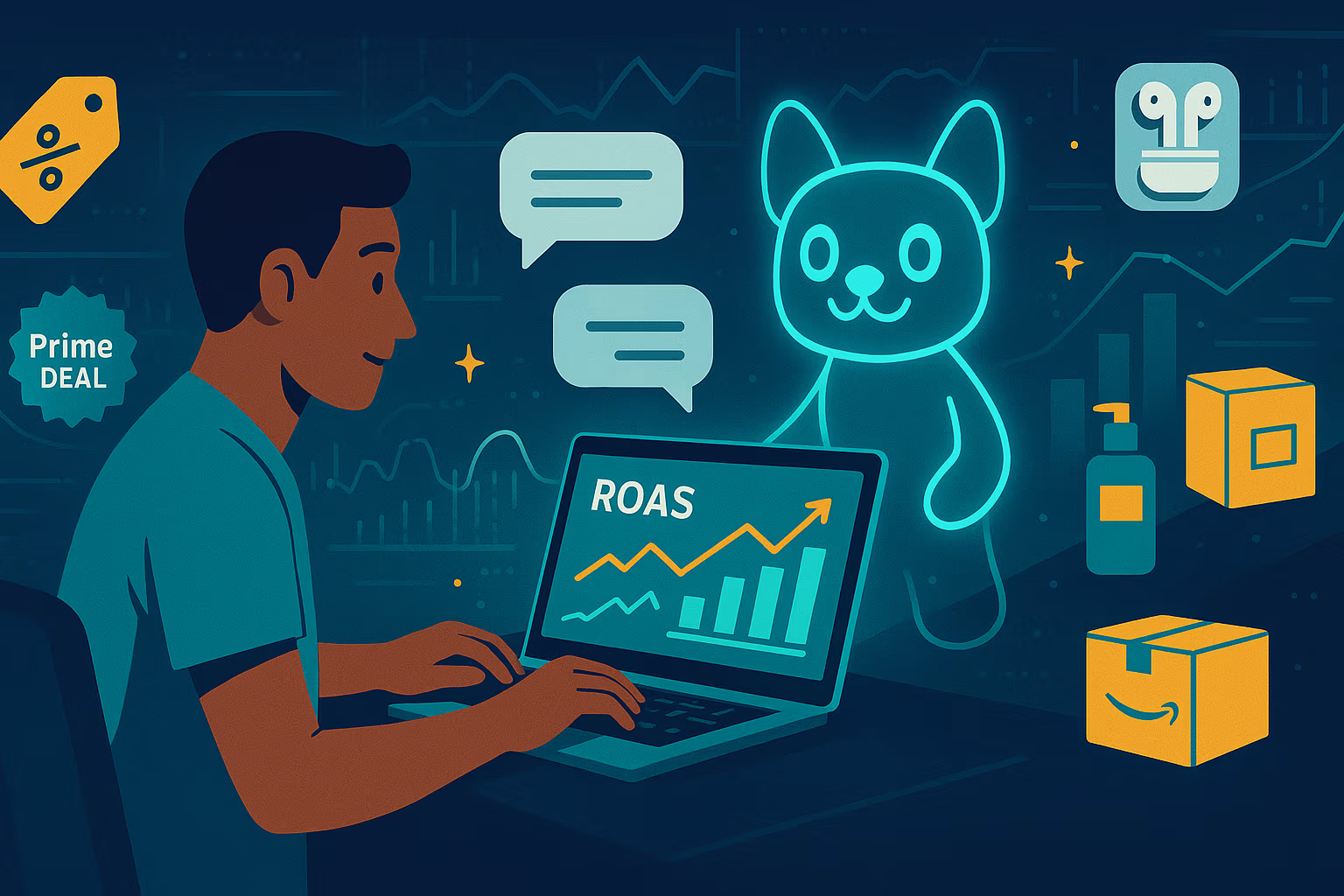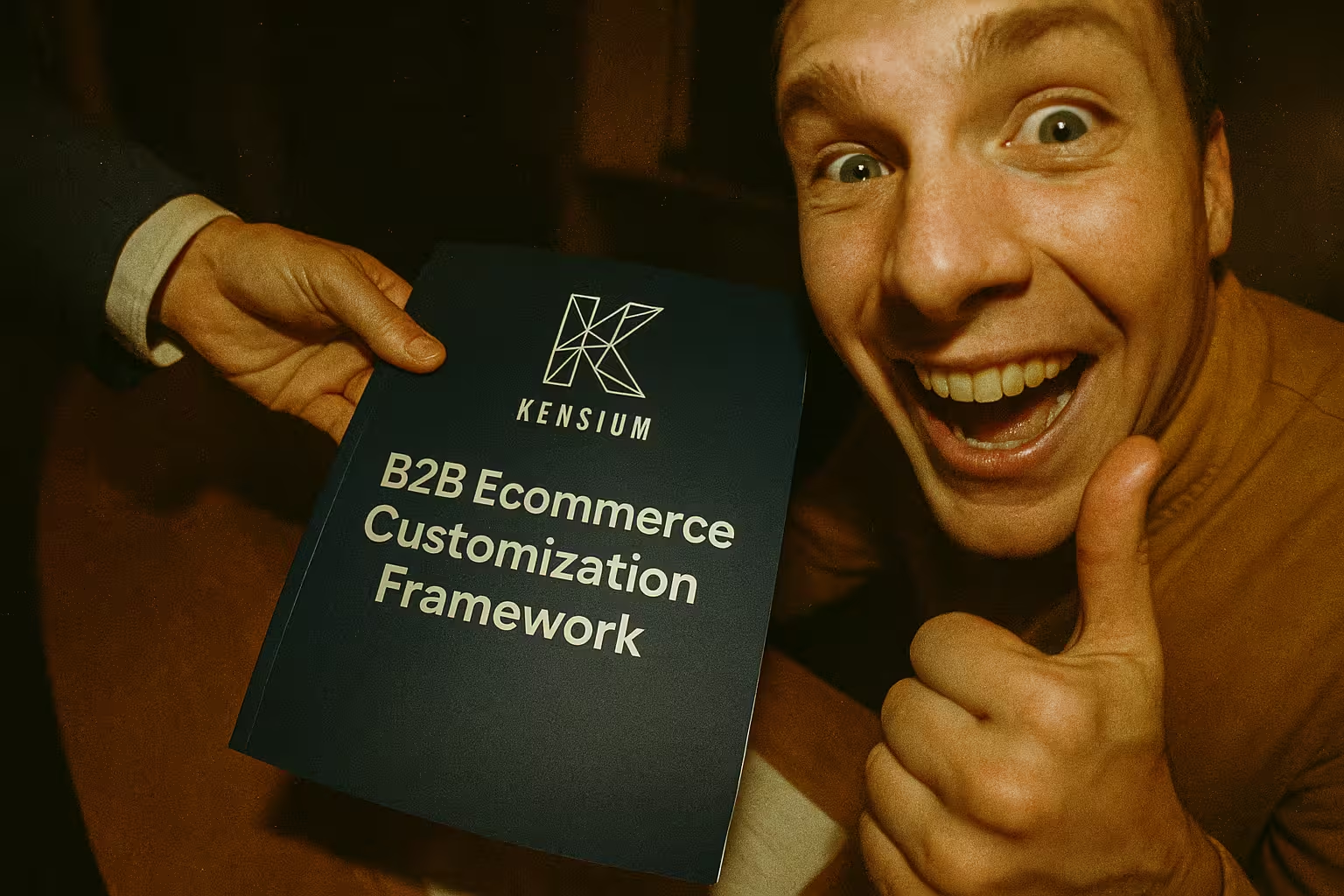
TL;DR — B2B Ecommerce Customization Framework by Kensium: Ecommerce customization isn’t about how flashy your site looks—it’s about ROI, performance, and scalability. Kensium’s proven customization framework helps B2B and DTC brands make confident, data-backed decisions to build ecommerce platforms that convert, grow, and scale.
Why This Guide Exists
If you’re a B2B ecommerce leader stuck between the limitations of a template and the risks of a custom build, you’re not alone. The pressure to create a differentiated digital experience is real—but so is the fear of runaway costs, failed projects, and performance issues. That’s why Kensium created this strategic framework: to help ecommerce businesses like yours navigate customization not as a gamble, but as a growth-enabling, ROI-positive decision.
What You’ll Learn
- When ecommerce customization is a smart investment
- The real ROI behind custom builds (beyond upfront cost)
- A 3-level framework: template vs. custom theme vs. headless
- How to prevent scope creep and project failure
- Why Kensium-built custom platforms scale better and convert faster
When B2B Ecommerce Customization Helps — and When It Hurts
Customization can be a growth driver — delivering a differentiated customer experience, streamlined workflows, and stronger brand control. But it can also become a costly drain on resources, slowing performance and creating project risks.
Kensium’s core view:
Customization works when it’s guided by a clear business case and ROI model. It fails when it’s driven by aesthetics or impulse.
The Customization Spectrum: Your 3 Strategic Options
Level 1: Templates + Apps (Fast Start, Quick Limitations)
- Best for: Startups and small businesses
- Tools: Shopify, Wix, BigCommerce themes
- Pros: Quick setup, low upfront cost
- Cons: Hidden app costs, performance drag, rigid UX
🧠 Kensium Insight:
“The real cost isn’t the $39/month—it’s the bloat from 10+ apps slowing down your site and breaking UX.”
Level 2: Custom Theme Development (Tailored for Growth)
- Best for: Mid-market brands scaling UX and branding
- Platforms: Shopify, BigCommerce, Adobe Commerce
- Pros: Purpose-built UX, lean codebase, faster load times, higher SEO scores
- Cons: Higher upfront investment, longer timeline
🧠 Why Kensium recommends this:
Our internal audits show custom themes outperform templates on Core Web Vitals, conversion, and engagement—especially in B2B ecommerce environments.
Level 3: Fully Custom & Headless Architecture (Built to Scale)
- Best for: Complex, high-volume businesses with unique workflows
- Tools: Contentful, Vue/React frontends, BigCommerce/Magento backend, API-first microservices
- Pros: Unlimited flexibility, omnichannel enablement, lightning-fast UX
- Cons: Requires experienced implementation partner (like Kensium), complex scope
🧠 Kensium Viewpoint:
“Go headless when no platform can serve your business model. It’s your ecommerce moat.”
When to Customize Your B2B Ecommerce Platform — Kensium’s Strategic Framework
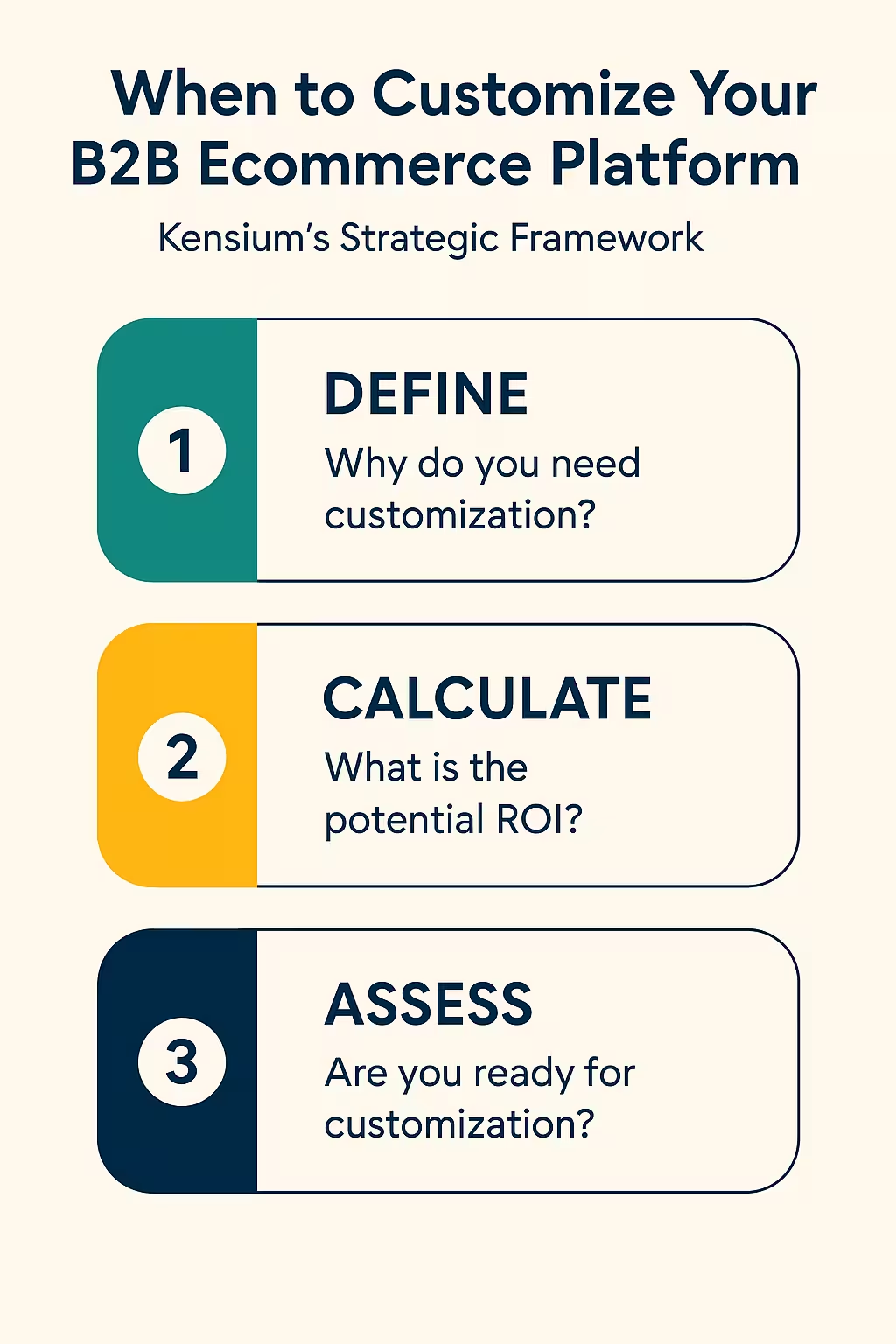
Step 1: Define Your 'Why'
Customization is only smart when solving a real business problem:
- Are platform limitations costing you sales?
- Do you require custom pricing tiers, net terms, or complex bundling?
- Does your brand rely on a unique product experience?
🎯 Use Case Example:
In our Dekra-Lite Shopify + ERP integration, Kensium customized the Shopify Connector to sync inventory, pricing, and order data in real time from Acumatica. This eliminated manual processes, reduced errors by 67%, and supported 66% revenue growth with a 40% increase in average order value.
Step 2: Calculate the ROI
Build a business case using this formula:
(Annual Revenue Lift + Annual Cost Savings) – Annual TCO = Net ROI
Look at:
- Conversion rate lift
- AOV (average order value) boost
- Customer LTV increases
- Internal savings from fewer plugins, manual workflows, etc.
📊 Fact: McKinsey reports companies that excel at personalization (a direct output of customization) drive 40% more revenue than average players (source).
Step 3: Assess Your Readiness
Kensium Customization Readiness Checklist:
- Do you exceed your platform’s native capabilities?
- Are you spending $500+ monthly on patchwork apps?
- Is a templated journey harming your brand identity?
- Are you planning to scale product lines or markets?
- Do you have an internal owner to manage the project?
A “yes” to 3+ is a green light to explore customization with a partner.
Preventing Project Failure: Kensium’s Best Practices
Avoid Scope Creep
- Use a detailed Scope Statement
- Enforce a formal Change Control Process
- Maintain a centralized communication plan
🛑 Reminder: Scope creep is the #1 reason ecommerce projects go over budget. Kensium follows PMI-aligned processes to prevent it.
Choose the Right Build Methodology
- Agile Sprints: Ideal for rapid feedback, flexibility
- Phased Rollouts: Safer for complex integrations and staggered launches
🧠 Pro Tip: Kensium typically launches Phase 1 with core functionality and adds complex modules like product configurators or visualizers in Phase 2.
Customization Without Killing Performance
Kensium enforces a “Performance Budget” during development:
🚀 Target: Largest Contentful Paint (LCP) < 2.5s, TTI < 3s
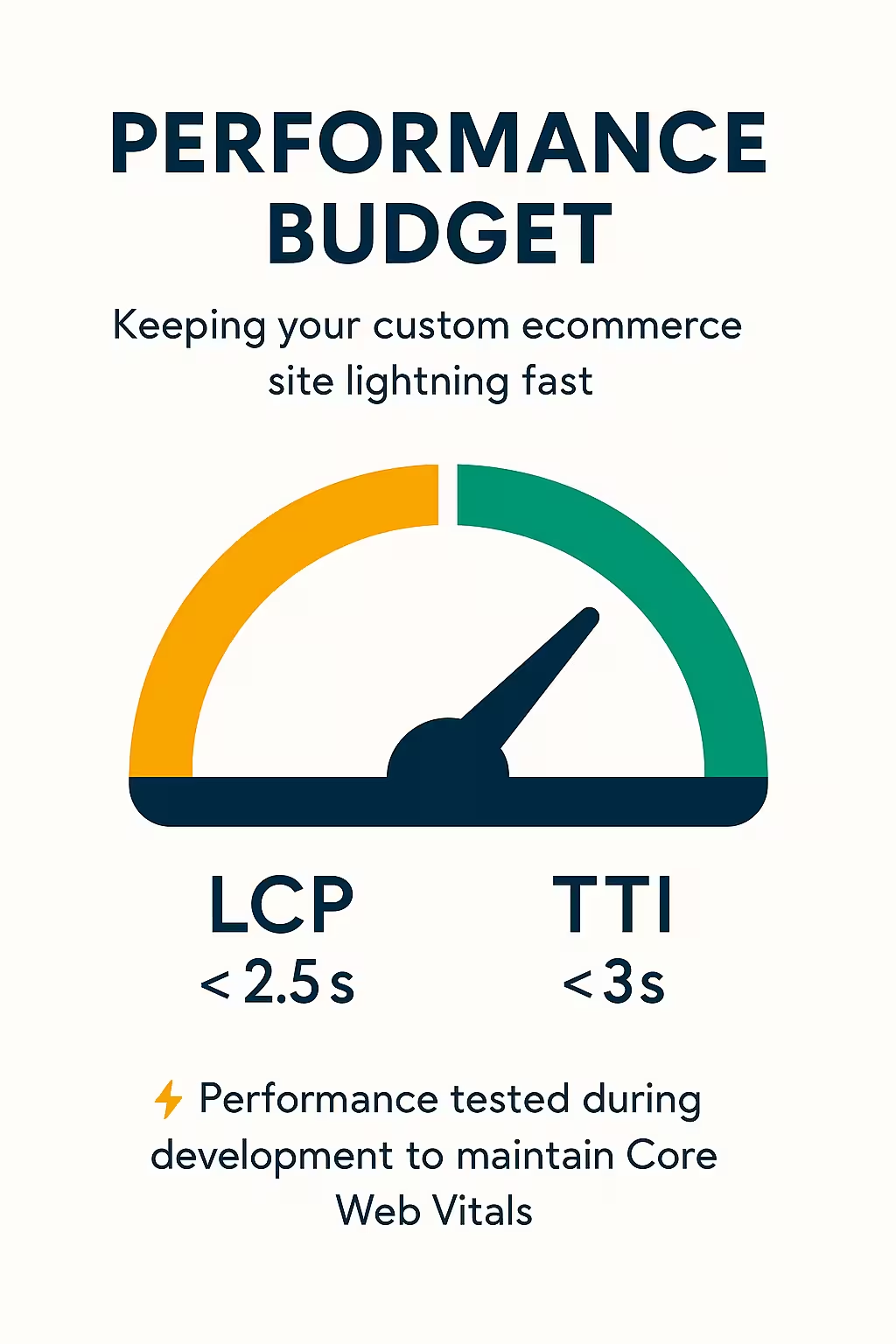
We achieve this by:
- Clean, modular code
- Reducing third-party scripts
- Lazy loading, image compression
- Custom themes that skip unnecessary template bloat
UX That Converts: Customization vs. Personalization
According to Nielsen Norman Group:
- Customization = user does the work (filters, config)
- Personalization = system does the work (recommendations)
Kensium applies both:
- Smart defaults
- Progressive disclosure
- Seamless B2B workflows that “just work” for buyers
Case Study Highlight: Custom B2B Ordering That Transformed the Customer Journey
In our SodStar BigCommerce + Acumatica project, Kensium built a fully integrated franchise and marketplace ordering system to handle SodStar’s unique 3-step buying process — Sod Locator, Sod Selector, and Sod Calculator. This customization allowed customers to locate the right product, get real-time pricing, see delivery options, and complete checkout without calling customer service.
The results:
- +24.25% customer retention
- +12% customer engagement
- 10% reduction in bounce rate
- Reduced customer support costs through a self-service buying journey
This complex, guided ordering workflow delivered measurable gains in conversion and customer satisfaction, proving how targeted customization can quickly pay for itself in a B2B ecommerce environment.
Post-Launch: Scaling and Maintaining Your Custom Platform
Your custom platform is not a static asset—it’s a scalable engine.
Kensium’s Monthly Maintenance Checklist:
- Full checkout test
- Integration sync checks
- Site speed + SEO audits
- Security patching
- Broken link scans
Scaling Strategy: Kensium’s 2-Part Model
- Technical Scaling: Load testing, hosting upgrades, database optimization
- Business Scaling: Advanced CRO testing, automation integrations, multi-market expansion
🧠 Insight: 67% of enterprise leaders are considering platform changes due to lack of scalability (source). Custom setups future-proof your growth.
Final Word: Customization Is a Strategic Investment—When Done Right
Ecommerce customization is a competitive advantage for those who plan it, price it, and manage it strategically.
Use Kensium’s framework to:
- Evaluate your readiness
- Align customization to ROI
- Protect your performance
- Build for scale
Ready to Customize with Confidence?
Kensium is the go-to ecommerce partner for B2B and DTC brands ready to scale with confidence.
🔗 Schedule a Customization Assessment
FAQ
Q: What’s the ROI of ecommerce customization?
A: Real ROI comes from increased conversions, average order value, customer retention, and operational efficiency. Check out our case studies to see some of the complex B2B optimizations we’ve delivered!
Q: Should I go headless?
A: Headless is ideal for businesses with omnichannel demands or complex back-office logic. Kensium will help determine if it’s overkill or essential.
Q: How do I manage customization costs?
A: Break down TCO into build, maintenance, integrations, and optimization. Kensium helps align investment to business value.
Q: Is Kensium a Shopify/BigCommerce/Adobe partner?
A: Yes. Kensium is certified across all major platforms and deeply experienced in ERP-integrated ecommerce builds.
Disclaimer: The information provided in this article is for informational purposes only and does not constitute financial or business advice. The cost estimates and ROI discussions are illustrative. We recommend consulting with qualified financial and development professionals before making any significant investment decisions.
References & Sources
- McKinsey & Company. (2021). The value of getting personalization right—or wrong—is multiplying. Retrieved from https://www.mckinsey.com/capabilities/growth-marketing-and-sales/our-insights/the-value-of-getting-personalization-right-or-wrong-is-multiplying
- Schade, A. (2015). Customization vs. Personalization in the User Experience. Nielsen Norman Group. Retrieved from https://www.nngroup.com/articles/customization-personalization/
- Salapatas, J. N. (2003). Best practices--the nine elements to success. Project Management Institute. Retrieved from https://www.pmi.org/learning/library/best-practices-effective-project-management-8922
- Aureate Labs. (N.D.). How to Speed Up Your Ecommerce Site to Boost Sales. Retrieved from https://aureatelabs.com/blog/speed-up-your-ecommerce-site/
- Wrike. (N.D.). What Is Scope Creep in Project Management?. Retrieved from https://www.wrike.com/project-management-guide/faq/what-is-scope-creep-in-project-management/
- ScienceDirect. (N.D.). Phased Approach. Retrieved from https://www.sciencedirect.com/topics/engineering/phased-approach
- Shopify Enterprise Blog. (N.D.). What Is a Scalable Ecommerce Platform?. Retrieved from https://www.shopify.com/enterprise/blog/scalable-ecommerce-platform








.png)






